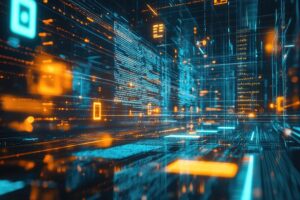Introduction
When people think of Texas, they often imagine cowboy culture, oil fields, and barbecue. However, the Lone Star State is also a burgeoning tech hub, rivaling Silicon Valley and Seattle in innovation and opportunity. From Austin’s “Silicon Hills” to Dallas-Fort Worth’s booming startup scene, Texas is rapidly becoming a global leader in technology.
In this in-depth guide, we’ll explore:
- Texas’s rise as a tech powerhouse
- Key tech hubs in Texas (Austin, Dallas, Houston, San Antonio)
- Top Texas-based tech companies and startups
- Texas universities driving tech innovation (UT Austin, Texas A&M, Rice, Texas Tech University)
- Emerging tech trends in Texas (AI, cybersecurity, space tech, energy tech)
- Why tech professionals are flocking to Texas
- How to break into Texas’s tech industry
By the end, you’ll understand why Texas is one of the best places in the U.S. for tech careers—and how you can be part of its growing tech revolution.
1. Why Texas is Becoming a Top Tech Destination
A. Business-Friendly Policies & Lower Cost of Living
Unlike California and New York, Texas offers:
- No state income tax (big savings for high-earning tech workers)
- Lower housing costs (compared to Silicon Valley or NYC)
- Pro-business regulations (attracting companies like Tesla, Oracle, and Apple)
B. A Surge in Tech Relocations
Major tech companies have moved headquarters or expanded operations in Texas:
- Tesla (Gigafactory in Austin)
- Oracle (HQ moved from California to Austin)
- Apple ($1 billion campus in Austin)
- Google, Amazon, Meta (expanding offices in Dallas & Houston)
C. Strong Talent Pipeline from Texas Universities
Texas universities produce top-tier engineering and computer science graduates:
- University of Texas at Austin (#1 public university for computer science in the U.S.)
- Texas A&M (leading engineering programs)
- Rice University (elite AI and data science research)
- Texas Tech University (growing tech programs in Lubbock)
2. Texas’s Top Tech Hubs
A. Austin – The “Silicon Hills”
- Why it’s booming: Home to Tesla, Dell, Samsung, and countless startups
- Key industries: AI, semiconductors, cybersecurity, fintech
- Tech events: SXSW (South by Southwest), Austin Startup Week
B. Dallas-Fort Worth – The Next Big Tech Corridor
- Why it’s growing: AT&T, Texas Instruments, and Goldman Sachs’ tech hub
- Key industries: Telecom, cloud computing, defense tech
- Notable startups: StackPath (cybersecurity), Dialexa (AI solutions)
C. Houston – Energy Tech & Space Innovation
- Why it’s unique: NASA’s Johnson Space Center & booming energy tech sector
- Key industries: Space tech, quantum computing, oil & gas tech
- Major employers: HP Enterprise, Schlumberger, Axiom Space
D. San Antonio – Cybersecurity & Military Tech
- Why it stands out: Home to USAA, cybersecurity firms, and military R&D
- Key industries: Cybersecurity, cloud infrastructure, defense tech
- Notable companies: Rackspace, Frost Bank’s fintech division
3. Top Texas-Based Tech Companies & Startups
A. Established Tech Giants in Texas
| Company | Industry | HQ Location |
|---|---|---|
| Tesla | Electric Vehicles/AI | Austin |
| Dell | Hardware/Cloud | Round Rock |
| Texas Instruments | Semiconductors | Dallas |
| AT&T | Telecom/5G | Dallas |
| Rackspace | Cloud Computing | San Antonio |
B. Rising Texas Tech Startups to Watch
- SpaceX (Boca Chica, TX) – Elon Musk’s Starship launches & space exploration
- ZenBusiness (Austin) – Simplifying small business startups with AI
- Oura Ring (Austin) – Leading wearable health tech
- Cart.com (Houston) – E-commerce logistics powered by AI
- SparkCognition (Austin) – AI for cybersecurity and energy
4. Texas Universities Leading in Tech Innovation
A. University of Texas at Austin (#1 Public CS School in the U.S.)
- Top programs: AI, robotics, quantum computing
- Notable alumni: Michael Dell (Dell Technologies), Drew Houston (Dropbox)
- Research hubs: Texas Advanced Computing Center (TACC)
B. Texas A&M University (Engineering & Defense Tech Powerhouse)
- Key strengths: Autonomous systems, cybersecurity, energy tech
- Partnerships: NASA, U.S. Department of Defense
C. Rice University (Elite AI & Nanotech Research)
- Notable: Home to IBM-Q quantum computing research
- Startup incubator: The Ion (Houston’s tech innovation hub)
D. Texas Tech University (Growing Influence in Tech)
- Key programs: Data science, wind energy tech, agricultural tech
- Research focus: National Wind Institute, Innovation Hub at Research Park
5. Emerging Tech Trends in Texas
A. Artificial Intelligence & Machine Learning
- Austin AI startups are leading in natural language processing (NLP) and robotics
- Houston’s medical AI (MD Anderson Cancer Center uses AI for diagnostics)
B. Cybersecurity & Defense Tech
- San Antonio = “Cyber City USA” (military and private-sector cybersecurity)
- Texas A&M’s RELLIS Campus trains next-gen cyber warriors
C. Space Tech & Commercial Spaceflight
- SpaceX’s Starbase (Boca Chica, TX) – Launch site for Mars missions
- Houston’s Axiom Space – Building the first commercial space station
D. Energy Tech & Green Innovation
- Texas leads in wind & solar energy tech
- Hydrogen fuel research at UT Austin & Texas A&M
6. Why Tech Professionals Are Moving to Texas
✅ Higher Salaries + Lower Taxes (No state income tax = more take-home pay)
✅ Affordable Housing (Compared to California or New York)
✅ Thriving Startup Scene (Austin ranked #1 for startups in 2023)
✅ Strong Job Market (Over 300,000+ tech job openings in 2024)
7. How to Break Into Texas’s Tech Industry
Step 1: Choose Your Tech Path
- Software Development? (Austin & Dallas have the most jobs)
- Cybersecurity? (San Antonio is the best hub)
- AI/ML? (Austin & Houston lead in AI research)
Step 2: Get the Right Education & Certifications
- Degrees: UT Austin, Rice, Texas A&M, or Texas Tech for top-tier programs
- Bootcamps: General Assembly (Austin), Coding Dojo (Dallas)
- Certifications: AWS, Google Cloud, CISSP (for cybersecurity)
Step 3: Network in Texas’s Tech Community
- Attend: SXSW, Houston Tech Rodeo, Dallas Startup Week
- Join: Austin Tech Meetups, DFW Blockchain Group
Step 4: Apply to Texas Tech Jobs
- Top job boards: BuiltInAustin, Dice, LinkedIn (filter for Texas jobs)
- Major employers: Tesla, Dell, Rackspace, Oracle, SpaceX
Conclusion: Texas is the Future of Tech
Texas is no longer just about oil and cowboys—it’s a tech powerhouse with booming job opportunities, top-tier universities, and a lower cost of living than Silicon Valley. Whether you’re a software engineer, data scientist, cybersecurity expert, or space tech enthusiast, Texas offers a thriving ecosystem for tech professional.
Artificial Intelligence & Machine Learning: A Complete Guide for Beginners
Introduction to AI & ML: Why They Matter in 2024
Artificial Intelligence (AI) and Machine Learning (ML) are no longer futuristic concepts—they’re transforming industries, from healthcare to finance, and even creative fields like art and music. But what exactly are they, and how do they work?
In this beginner-friendly guide, we’ll break down:
✅ What AI & ML really mean (simple definitions)
✅ Key differences between AI, ML, and Deep Learning
✅ Real-world applications (how companies use them today)
✅ How to start learning AI & ML (free resources & career paths)
By the end, you’ll understand why AI is reshaping the world—and how you can be part of this revolution.
1. What is Artificial Intelligence (AI)?
Definition:
AI refers to machines that can perform tasks requiring human-like intelligence, such as:
- Recognizing speech (Siri, Alexa)
- Making decisions (self-driving cars)
- Solving complex problems (chess-playing computers)
Types of AI:
- Narrow AI (Weak AI) – Designed for specific tasks (e.g., chatbots, facial recognition).
- General AI (Strong AI) – Hypothetical AI that can think like humans (doesn’t exist yet).
- Superintelligent AI – A future AI that surpasses human intelligence (still sci-fi).
Real-World AI Examples:
- ChatGPT (Generative AI for text)
- Tesla Autopilot (Self-driving AI)
- Netflix Recommendations (AI that predicts what you’ll watch)
2. What is Machine Learning (ML)?
Definition:
ML is a subset of AI where machines learn from data without being explicitly programmed.
How ML Works (Simple Explanation):
- Input Data → The system receives data (e.g., cat/dog images).
- Training → The ML model finds patterns (e.g., cats have pointy ears).
- Prediction → When given a new image, it guesses if it’s a cat or dog.
Types of Machine Learning:
| Type | How It Works | Example |
|---|---|---|
| Supervised | Learns from labeled data | Spam detection in emails |
| Unsupervised | Finds patterns in unlabeled data | Customer segmentation |
| Reinforcement | Learns by trial & error (rewards) | AI playing chess or video games |
3. AI vs. ML vs. Deep Learning
Many people confuse these terms—here’s the difference:
| Term | Definition | Example |
|---|---|---|
| AI | Machines mimicking human intelligence | Voice assistants (Alexa) |
| ML | AI that learns from data | Netflix recommendations |
| Deep Learning | A type of ML using neural networks (brain-like) | Facial recognition (Facebook tags) |
Think of it like this:
- AI = The big idea (smart machines)
- ML = A way to achieve AI (learning from data)
- Deep Learning = A powerful ML technique (neural networks)
4. How Companies Use AI & ML Today
1. Healthcare 🏥
- AI Diagnostics: Detecting cancer from X-rays faster than doctors.
- Drug Discovery: AI models predict how new medicines will work.
2. Finance & Banking 💳
- Fraud Detection: ML spots unusual transactions in real time.
- Algorithmic Trading: AI predicts stock market trends.
3. Retail & E-Commerce 🛒
- Personalized Recommendations (Amazon’s “You might also like…”).
- Chatbots handling customer service 24/7.
4. Autonomous Vehicles 🚗
- Tesla’s Self-Driving Cars use AI to navigate roads.
- Uber’s AI predicts ride demand in cities.
5. Entertainment & Social Media 🎬
- Deepfake Videos (AI-generated fake videos).
- TikTok’s Algorithm learns what videos you’ll watch next.
5. How to Learn AI & ML (Free & Paid Resources)
Step 1: Learn Python (The #1 AI/ML Language)
- Free Course: Python for Beginners (W3Schools)
- Practice: Solve problems on LeetCode
Step 2: Study Key Math Concepts
- Statistics (Mean, median, probability)
- Linear Algebra (Vectors, matrices)
- Calculus (Gradients, derivatives)
Step 3: Take an ML Course
- Free: Google’s Machine Learning Crash Course
- Paid (Certification): IBM AI Engineering (Coursera)
Step 4: Work on Projects
- Beginner: Predict house prices using Kaggle datasets
- Advanced: Build a chatbot with TensorFlow
Step 5: Join AI Communities
- Reddit: r/MachineLearning
- Discord: AI & ML study groups
6. Future of AI & ML (2025 & Beyond)
🔮 AI-Generated Content: More movies, music, and art made by AI.
🔮 AI in Law & Policy: Governments using AI for decision-making.
🔮 Ethical AI: Debates on bias, privacy, and job displacement.
Conclusion: Should You Learn AI & ML?
Absolutely! AI and ML are high-paying careers (average salary: $120K+) and will shape the future. Whether you want to:
- Build AI tools (become an ML engineer)
- Use AI in business (data analyst, product manager)
- Research AI ethics (policy & governance)




